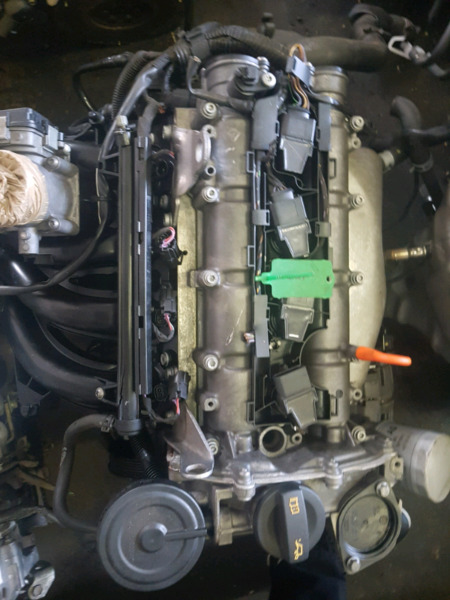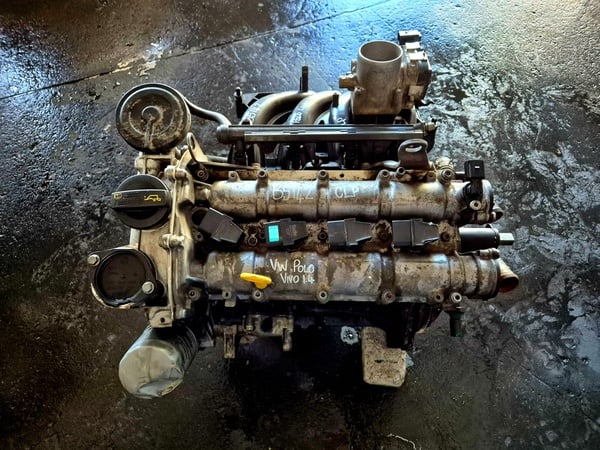Ensure smooth operations with a properly serviced clp engine.
Wiki Article
The Function of a Clp Engine in Revolutionizing Engine Performance and Sustainability
The introduction of CLP engine technology provides a turning point in the auto sector, where performance and sustainability converge in extraordinary means. By maximizing burning procedures and enabling dynamic changes in compression ratios, these engines not just assure improved gas effectiveness and lowered discharges however also difficulty traditional engineering standards. As the industry comes to grips with journalism requirement for greener options, the implications of embracing CLP innovation extend much beyond mere performance metrics. What continues to be to be seen is how these developments will certainly improve the future landscape of automotive design and ecological duty.Comprehending CLP Engine Innovation
As the automobile sector continuously looks for ingenious options to improve efficiency and efficiency, comprehending CLP engine technology comes to be vital. The term CLP means Compression-Low Pressure, a sophisticated engine layout that focuses on enhancing burning processes and lowering emissions. This innovation runs by keeping a low-pressure environment within the burning chamber, which assists in an extra full gas shed and minimizes unburned hydrocarbons.Among the key functions of CLP engine technology is its capability to adjust the compression proportion dynamically. This adaptability permits the engine to run effectively throughout different driving problems, improving gas economic climate while concurrently enhancing power outcome. Additionally, CLP engines utilize advanced materials and design principles to reduce weight and thermal losses, better adding to general efficiency.
Furthermore, the integration of electronic control systems plays a crucial function in managing the engine's efficiency criteria. These systems allow real-time changes to ignition timing and fuel shot, maximizing combustion for both power and effectiveness. By understanding CLP engine technology, stakeholders in the automotive industry can much better appreciate its capacity in driving the future of engine style, performance, and sustainability.
Performance Enhancements Offered
CLP engine innovation supplies considerable performance improvements that set it besides typical engine layouts. One of the key benefits of CLP engines is their capability to run efficiently throughout a wider series of speeds and tons. This versatility translates right into improved torque delivery and acceleration, offering a much more responsive driving experience.Additionally, the sophisticated burning process made use of in CLP engines optimizes fuel-air blending, bring about higher thermal effectiveness. This improvement not just maximizes power result yet additionally decreases energy loss, leading to an engine that does much better under various problems.
Moreover, the modular architecture of CLP engines permits less complicated assimilation with crossbreed systems, enhancing their performance capacity - clp engine. This adaptability allows manufacturers to design cars that cater to consumer demands without giving up dexterity or power
The precision engineering associated with CLP innovation additionally adds to reduce rubbing and wear, improving engine have a peek at these guys longevity and lowering the frequency of upkeep. On the whole, these performance improvements placement CLP engines as a leading selection in the quest of high-performance, reputable, and versatile engine solutions.
Environmental Advantages of CLP Engines
Among the most compelling advantages of CLP engines depends on their environmental benefits, which are significantly essential in today's auto landscape. These engines are made to optimize gas effectiveness, considerably lowering carbon exhausts contrasted to conventional burning engines. By making use of innovative burning methods and ingenious products, CLP engines advertise cleaner exhaust outcomes, adding to boosted air quality.In addition, the reduction in gas consumption not only causes reduce greenhouse gas exhausts but additionally conserves important natural sources. As fossil gas gets dwindle, the change in the direction of CLP innovation represents a tactical action in the direction of sustainability. The engines are usually suitable with alternative gas, even more improving their eco-friendly charm and permitting a diversified power portfolio.
In addition, the light-weight layout of CLP engines helps lower car weight, which in turn lowers the power needed for propulsion. This causes reduced functional energy usage and a reduced environmental footprint. In summary, CLP engines stand at the forefront of efforts to minimize environment adjustment and advertise lasting practices in the vehicle field, personifying a future where efficiency and ecological obligation are not equally exclusive.
Comparison With Conventional Engines
While traditional engines have lengthy dominated the automotive market, the introduction of CLP technology offers a considerable change in performance and efficiency. Conventional inner combustion engines mostly count on gas combustion, which not only restricts thermal efficiency however additionally contributes to higher discharges. On the other hand, CLP engines use sophisticated thermal administration and a special combustion procedure, enhancing fuel efficiency and considerably decreasing greenhouse gas exhausts.Furthermore, standard engines operate on fixed power curves, which can impede efficiency in differing driving conditions. CLP engines, nevertheless, are designed to adjust their efficiency dynamically, supplying ideal power delivery based on real-time demands. This flexibility leads to improved velocity, responsiveness, and total driving experience.
Upkeep additionally varies considerably; typical engines commonly call for regular oil modifications and component substitutes because of deterioration. clp engine. CLP engines, with less moving parts, guarantee reduced upkeep requirements and longer functional lifespans

Future Prospects and Innovations
As the automobile from this source landscape develops, the future of engine modern technology is progressively focused on developments that boost performance and sustainability. The Clp engine, with its unique style and functional efficiencies, is positioned to play a pivotal duty in this transformation. Future growths may include innovations in products science, allowing the construction of lighter and more sturdy elements, therefore minimizing overall automobile weight and enhancing fuel performance.Moreover, the integration of fabricated knowledge and artificial intelligence into engine monitoring systems is expected to maximize efficiency dynamically, permitting real-time changes based on driving conditions. These innovations can additionally minimize exhausts and enhance energy application.
Additionally, research right into different gas, consisting of hydrogen and biofuels, provides interesting possibilities for Clp engines, lining up performance with green efforts. clp engine. As regulative frameworks end up being more stringent, the adoption of such technologies will certainly be vital in achieving sustainability objectives without compromising power
Conclusion

Report this wiki page